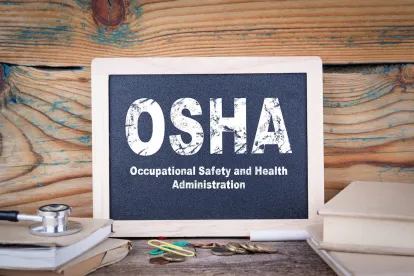Introduction
In a recent decision, the U.S. Court of Appeals for the Eleventh Circuit rejected an Occupational Safety and Health Administration (“OSHA”) effort to widely broaden the scope of an inspection based on past injuries recorded on the employer’s injury and illness logs. See United States v. Mar-Jac Poultry, Inc., No. 16-17745, 2018 WL 4896339 (11th Cir. Oct. 9, 2018). This decision serves as a reminder of the limited scope of OSHA’s inspection authority following a workplace injury, an employer’s right to request a warrant where OSHA attempts to expand the scope of an unprogrammed inspection, and the burden that OSHA must meet to expand the scope of an inspection.
Background Facts
An electrical accident injured an employee at Mar-Jac Poultry, Inc., a Georgia poultry processing plant. Mar-Jac reported the electrical accident to OSHA, which initiated an unprogrammed inspection based on that information. OSHA inspectors asked to inspect the entire facility, including areas unrelated to the electrical accident; however, Mar-Jac only consented to an inspection of the site and tools involved in the electrical accident.
As a result of its limited inspection of the Mar-Jac facility and illness and injury logs, OSHA identified nine potential hazards. OSHA sought a judicial warrant for a comprehensive inspection of the Mar-Jac facility, asserting that (1) the nine potential hazards established probable cause for an unprogrammed inspection of the entire facility for those hazards as well as hazards identified in the Regional Emphasis Program (“REP”), or alternatively (2) neutral criteria provided in the REP supported a programmed inspection. The magistrate judge issued the warrant.
Mar-Jac moved to quash the warrant, and the district court granted Mar-Jac’s motion. First, the district court found that OSHA only had probable cause for an unprogrammed inspection for four of the nine potential hazards (three of which related to the electrical accident). Second, the district court held that OSHA did not select Mar-Jac for a programmed inspection by applying neutral criteria. OSHA appealed the district court’s first finding, and the Court of Appeals affirmed the decision.
Analysis
At issue in Mar-Jac was the proper scope of a warrant to inspect a facility. The Occupational Safety and Health Act of 1970 authorizes two types of inspections: programmed inspections and unprogrammed inspections. OSHA schedules programmed inspections based on neutral criteria identified in a general administrative plan, such as an REP. In contrast, OSHA completes unprogrammed inspections when it identifies potentially hazardous working conditions. An unprogrammed inspection may follow the identification of an imminent dangerous situation, a serious injury or fatality, a complaint, or a referral. Unless the employer consents, OSHA must obtain a warrant prior to inspecting a facility. In its warrant application, OSHA must establish probable cause by providing reasonable suspicion that a violation exists.
The Eleventh Circuit concluded that OSHA did not establish reasonable suspicion to inspect for five potential hazards. The court explained that a hazard does not necessarily establish a violation; therefore, OSHA must provide reasonable suspicion that a violation—not simply a hazard—exists in its warrant application. Similarly, the court explained that the injuries recorded in illness and injury logs do not automatically justify a warrant, though the logs may indicate that hazards exist. After reviewing Mar-Jac’s logs, which described relatively few injuries, the court found that reasonable suspicion of a violation did not exist for the five potential hazards.
Impact of Mar-Jac
Mar-Jac reinforces that there are limits on OSHA’s inspection authority following a workplace injury. OSHA cannot justify inspecting a facility based solely on the existence of an injury or hazard. Rather, OSHA must provide additional evidence establishing reasonable suspicion of a violation. Therefore, Mar-Jac offers support to employers that would like to limit consent to or challenge a warrant for an OSHA inspection following an injury. However, employers should note that as Mar-Jac is an Eleventh Circuit decision and is not binding nationwide. Consequently, OSHA—which argued contrary to the Eleventh Circuit’s decision—may choose not to follow it in other circuits.
*Katrina Krebs is not yet admitted to practice and is supervised by members of the firm who are admitted to practice in Washington, DC. She contributed to this article.





 />i
/>i
